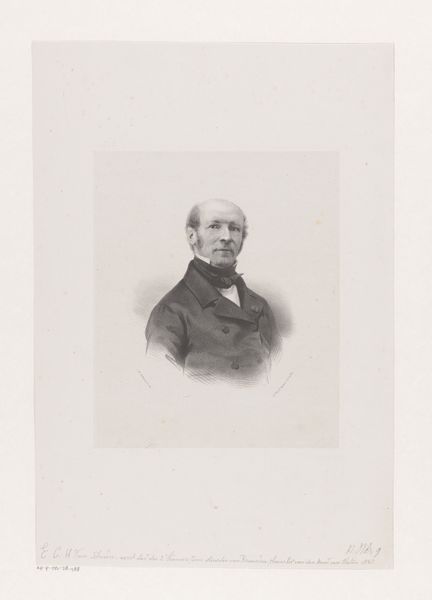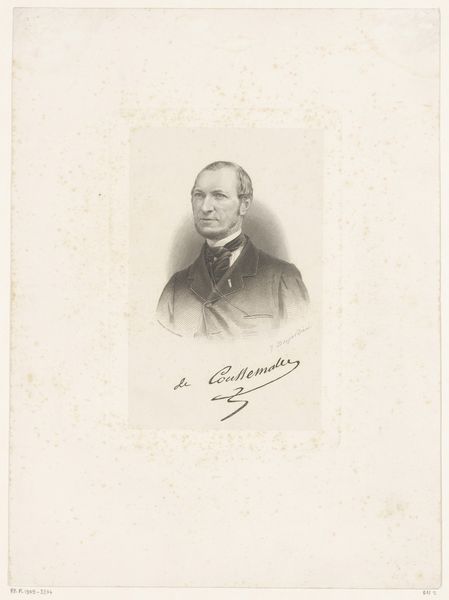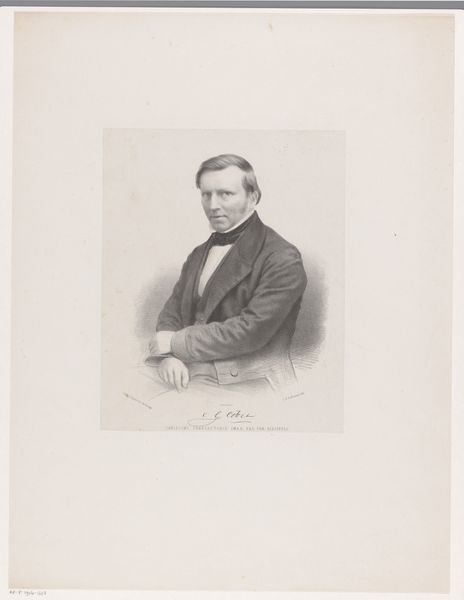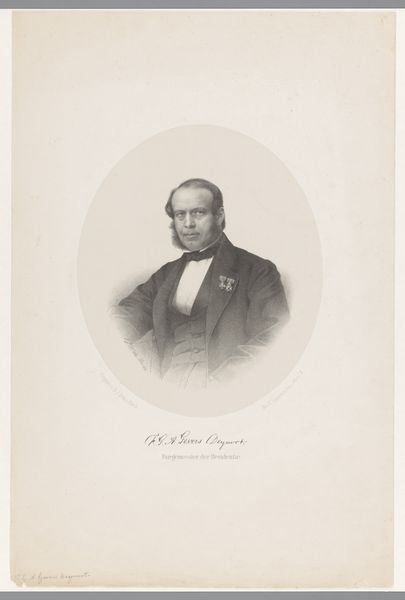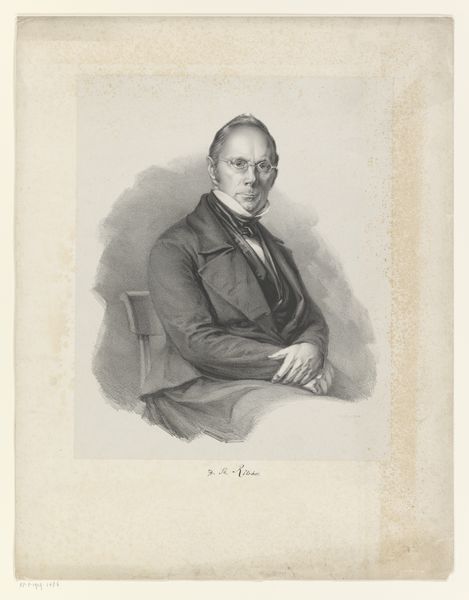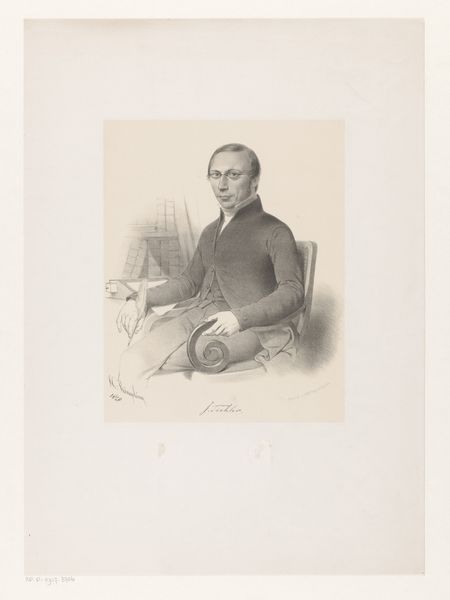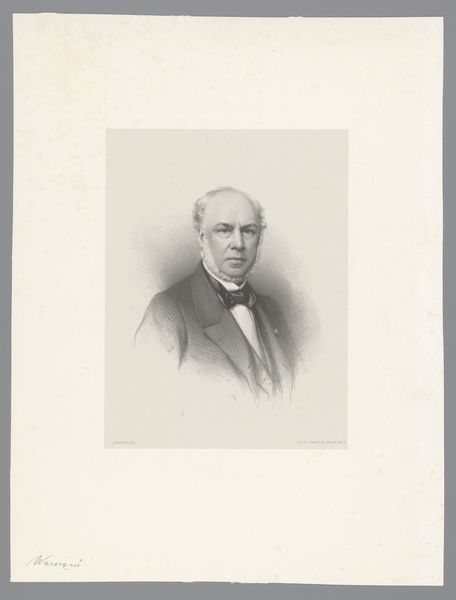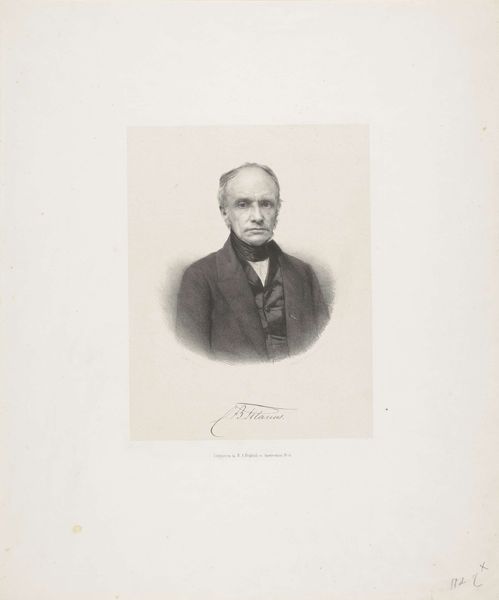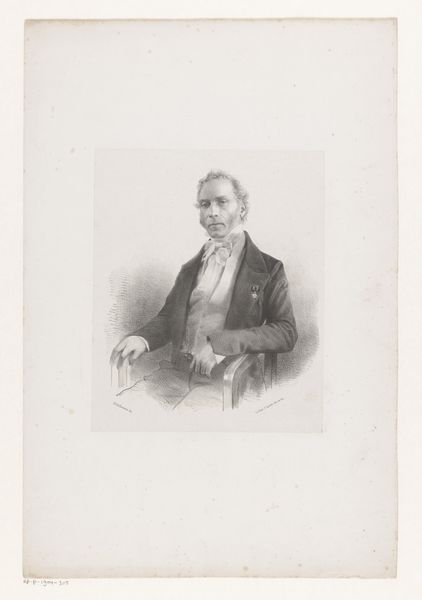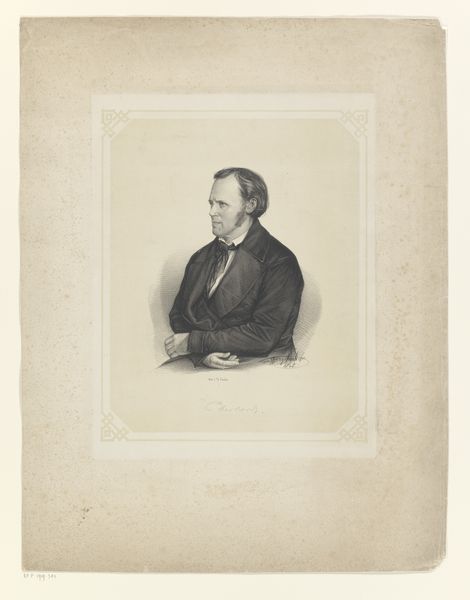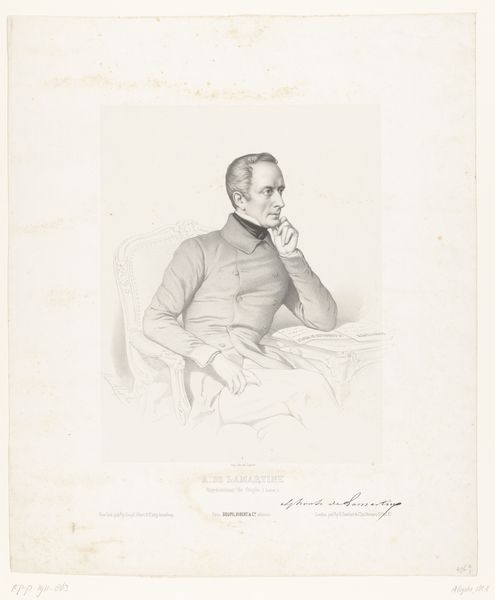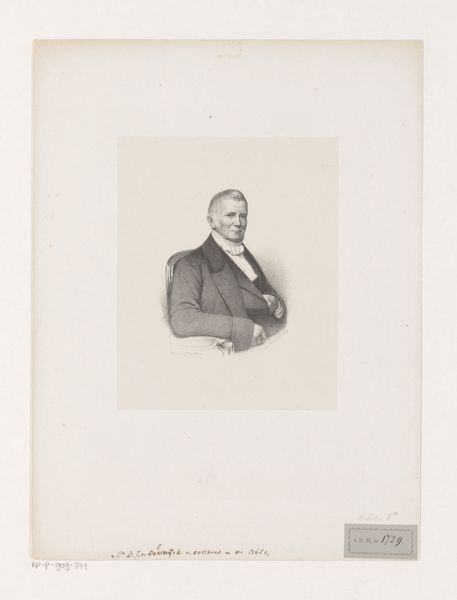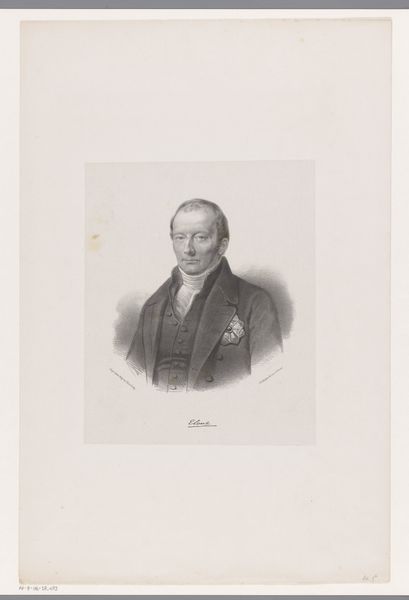
drawing, paper, pencil
#
portrait
#
drawing
#
paper
#
pencil
#
academic-art
#
realism
Dimensions: height 354 mm, width 265 mm
Copyright: Rijks Museum: Open Domain
Curator: Here we have an intriguing pencil drawing titled "Portret van Jan Moll Jacobzn," created sometime between 1822 and 1863. Editor: The somberness strikes me immediately. There's a remarkable stillness to this man, something deeply reflective in his posture and gaze. Curator: It’s a compelling study in contrasts. The crisp lines of his jacket sharply juxtapose with the subtle, almost hazy, shading used to render his face. The texture of the paper becomes integral to the aesthetic experience, its off-white hue softening the intensity of the graphite. Editor: Absolutely. Look at the setting – he’s seated, holding what appears to be a book, yet the background is almost completely devoid of context. This void pushes him forward, underscoring the weight of his individual presence. It raises questions, doesn't it? Who was Jan Moll Jacobzn, and why memorialize him in this stark, almost academic way? Curator: Precisely. Portraits such as this functioned as vital records, asserting the social status and individual worth within the burgeoning middle class. Notice the slight details, a lapel pin for instance. It suggests affiliation with a certain civic organization or perhaps even political leanings. The book implies literacy and scholarly pursuits – crucial components of middle-class identity during the period. Editor: So, more than just a likeness, this portrait communicates aspiration. But I keep returning to that gaze, the depth implied in the man's expression. The anonymous artist captured a psychological truth that elevates it above mere representation. Curator: I agree, this anonymous individual understood the expressive potential of the medium. Pencil allows for a degree of subtlety unattainable with ink, permitting those nuanced shadows that, as you point out, invest the sitter with such presence. It becomes a beautiful meditation on light, form, and human character. Editor: The play of light is rather strategic, come to think. The brighter lighting falling on the sitter's face guides the viewer toward interpreting emotions as part of his essence and existence. Thank you. It provides a far more considered approach to a portrait drawing I initially felt was just another work memorializing a bourgeois subject. Curator: It reveals how seemingly straightforward drawings can tell nuanced stories about their subjects and society in general.
Comments
No comments
Be the first to comment and join the conversation on the ultimate creative platform.
